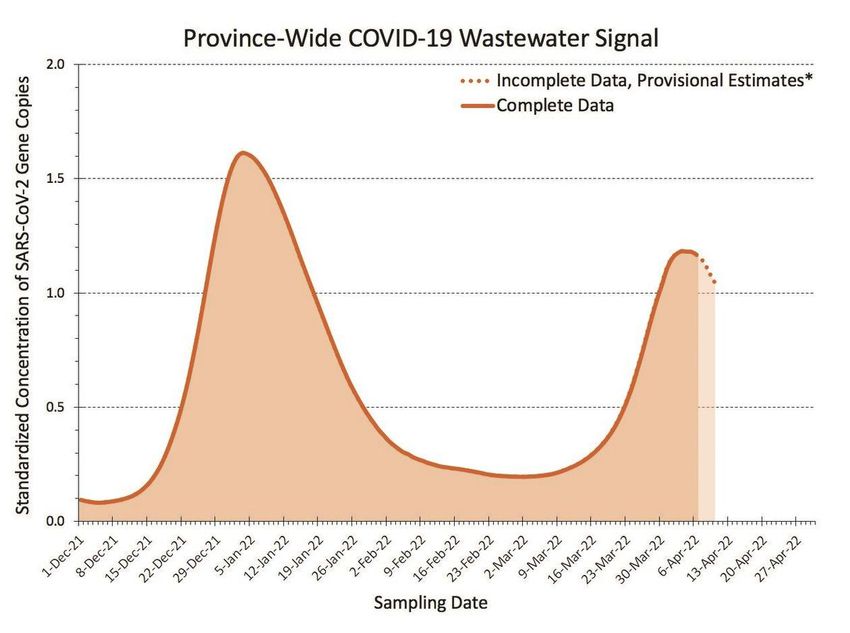COVID-19 cases in Ontario have likely plateaued around 100,000 new infections a day, according to new wastewater signal analysis by the province’s science advisory table.
The science table’s scientific director, Dr. Peter Jüni, is warning that it is uncertain whether new infections will stay at this level, increase or start to drop.
“We need to be careful,” said Jüni. “It could just be an intermediate step and go up again. Or we could continue on this high plateau or start to really go down. That’s uncertain. We could still see a little bit of instability, but it’s certainly promising.
“We should not get ahead of ourselves now.”
The news that new daily infections have not increased to more than 100,000 a day, a level the province reached last week, as reported by the Star, is undoubtedly welcome, and may be the result of accumulated immunity in the population, the arrival of better weather and the public’s own cautious behavior in response to reports of increased cases and hospitalizations, Jüni noted.
He said that the conclusion that new infections have slowed down can be made with 90 per cent certainty.
On Monday, in his first news conference since March 9, Ontario’s chief medical officer of health, Dr. Kieran Moore, acknowledged the province is now in a sixth COVID wave and said the upward trends in the wastewater surveillance signal and hospitalizations from the virus are likely to continue for the next several weeks.
On Wednesday, the Ministry of Health reported 1,332 COVID hospitalizations, representing a 71 per cent increase over the last two weeks. That includes 1,150 patients in regular wards and 182 in ICU due to the virus.
Colin Furness, an infection control epidemiologist at the University of Toronto, said that if wastewater levels of the virus start to decline it would be the “first glimmer of good news.”
But hospitalizations will continue to rise “for some time,” he said, because they are a lagging indicator of cases in the community. In contrast, wastewater signals can indicate infection before people start to show serious COVID symptoms since those signals are taken from fecal matter that is flushed down toilets.
High rates of health-care worker absenteeism, combined with rising hospitalizations, could still strain the health-care system to the point where, for example, some surgeries are cancelled, he said.
Public Health Ontario’s most recent weekly epidemiological summary reports that 1,195 health-care workers tested positive during the week of March 20-26. That number rose to 1,419 in the week of March 27-April 2 — an increase of about 19 per cent.
Chris DeGroot, an assistant professor at Western University, who has been tracking COVID wastewater levels in London, Ont., said those levels go up roughly in line with case numbers, so hospitalizations will peak later.
“You never know exactly how many people are going to be hospitalized in a given wave,” he said.
To help push the wastewater signal further down, Jüni urged the public to avoid crowded indoor spaces if they can, and implement masking as much as possible in schools, workplaces and other public indoor spaces — as well as getting fully vaccinated, including fourth doses for those eligible.
He also suggested those planning to get together over Easter may want to consider outdoor options, such as having a barbecue in public parks.
“The public needs to continue whatever they’re doing to protect themselves, or even do more,” he said.
JOIN THE CONVERSATION

